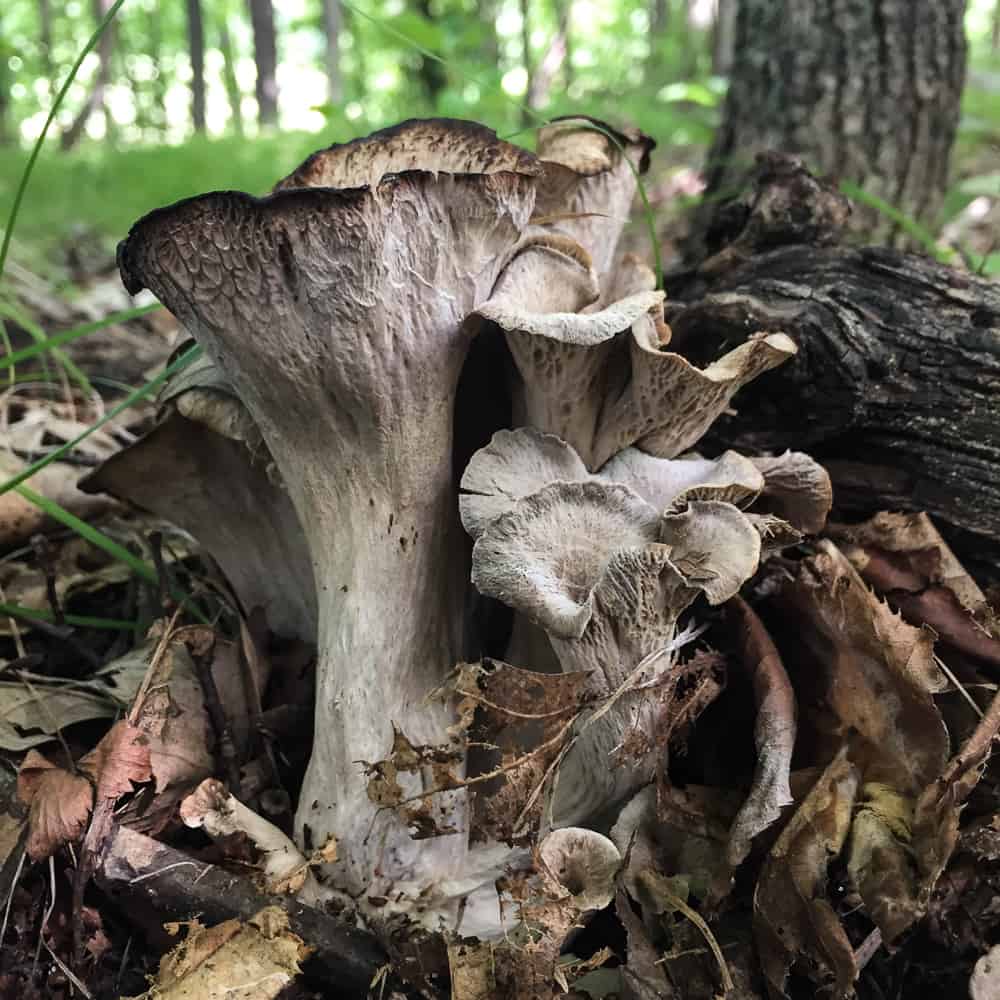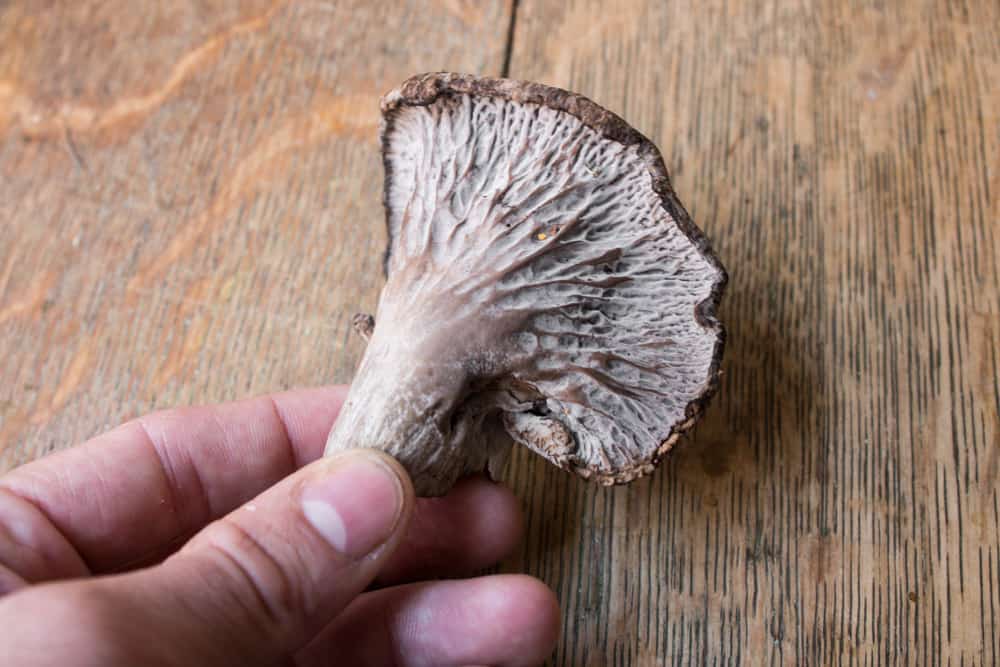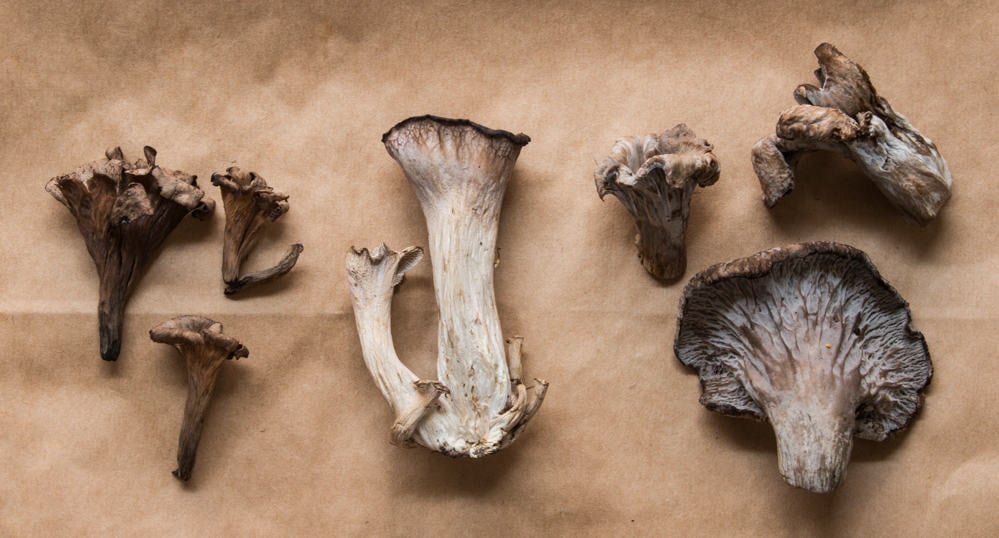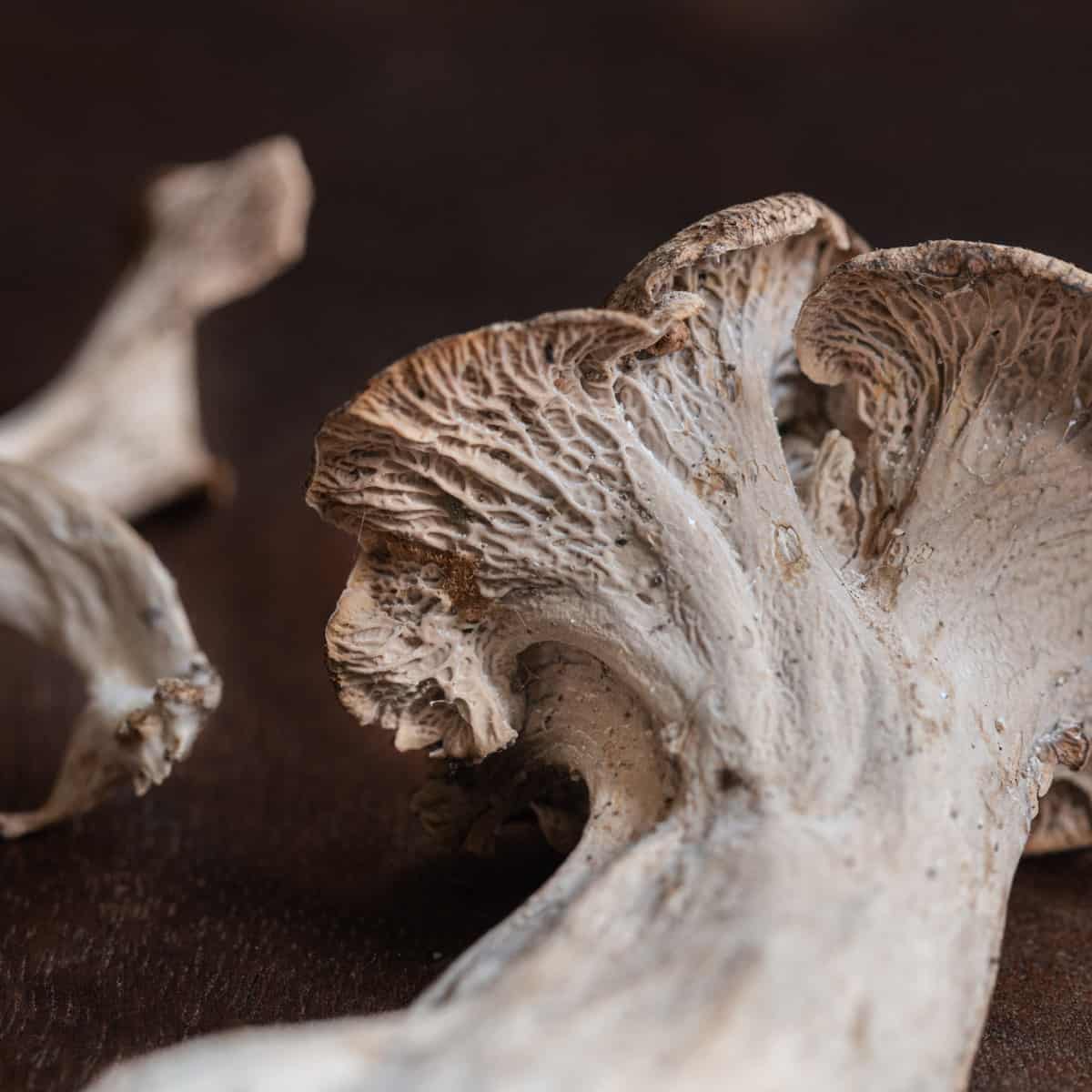The greatest black trumpet of them all. Fragrants as they're called, are an incredible mushroom you might find growing in your black trumpet patch.
I've heard hunting for black trumpet mushrooms compared to looking for black holes in the woods, and that isn't far from the truth. Even mycologist Chuck Barrows, (a guy who found undiscovered species of porcini and has them named after him) didn't even find his first one until he was an elderly man.
Until I started finding them on my own, I researched everything I could find on them. What I discovered was exciting, and maddening. You see, there isn't just one type of "black trumpets", there are a number of them, and some are more elusive than others.
A Rare Black Trumpet Mushroom
The fragrant is one of those more rare varieties of black trumpet mushroom. What it is exactly is up for debate a bit though. From my experience hunting in the Midwest, what people call "fragrants" could be one of two different species depending on what they've picked, either craterellus cinereus variation multiplex or craterellus foetidus.
This is part of the confusion that arises with using common names to describe things as opposed to the exact Latin name, if we just say we found some "fragrants" it doesn't tell us exactly the mushroom we picked. If we use the Latin name, we know exactly what they are, but that's easier said than done.
I'm a chef, not a mycologist, but here's some differences I've noticed that help me tell the two more rare black trumpet species apart. Keep in mind this is armchair research, an estimation on my part, and not something I would cite as a source.

Craterellus foetidus
- Grows clustered like black trumpets
- Very strong aroma
- Walls of the mushroom are much thicker than typical black trumpets
- May appear white from above or with age
- Delicate chanterelle-like ridges at the top of the mushroom

Craterellus cinereus
- I find these grow singularly like golden chanterelles, as well as clustered, but not as densely clustered as Cinereus
- Chanterelle-like ridges are much more pronounced at the top of the cap
- Mushrooms are still slightly vase shaped and hollow, but are much more meaty and thick than foetidus or fallax
- Solid, base/stem like a golden chanterelle
No matter what you call them though, both craterellus foetidus and craterellus cinereus taste great, and are exciting to find.

I like both species even more than typical trumpets, I find their aroma stronger, their taste sweeter, and their texture more meaty, especially the foetidus. I also find the ones that I've picked to be much less bitter than other black trumpets. These are minute details though, and in then end saying one is better is a bit like saying 70 % chocolate is inferior to 75%.
Thoughts on Hunting and Cooking
- Fragrants are tricky to find, but once you uncover some areas where easy-to-hunt golden chanterelles grow, you're on the right track, since they like the same habitat. In Minnesota, I see them where I find trumpets: deciduous forests near moist, shady areas, and around oaks, specifically white.
- Like typical black trumpets, they seem to have an affinity for moist areas containing some decay.
- A great trick I've used is looking for collections of rain water, or tiny ponds in the woods, then scouting the peripheries for the win. Looking for golden chanterelles in similar wet areas, which are much easier to spot, and then meticulously combing the surrounding area has given good results too though.
- Just like black trumpets, but unlike golden chanterelles, fragrants dry well, since they're still hollow.
- Because fragrants have more structure to them, they won't wilt and lose as much volume as trumpets, so they are great sauteed on their own, whereas I might put trumpets more often in a sauce to spread them out.
- Of course they pair great with cream, but most mushrooms do. My favorite way to cook them is fresh, simply, and as whole as possible, lightly browned in some butter, and then added to a dish.
Of course I can't leave you without sharing a fun recipe, so here's one of the best things I made with them so far, it's a warm brown butter-mushroom vinaigrette for a salad. It's a good example of how to cook them simply so they shine in the dish.



Kathleen Rodgers
Colony of trumpets, not color. Spell check auto has struck again
Kathleen Rodgers
We got lucky and found a great color of these. I am exited to put them on homemade pasta.
Lenny
I meant to say at the very end of cooking.
Lenny
Black trumpets loose a lot of aroma when cooked by any method. I usually add them to the dish at the very of cooking.
But aroma still disappears too quick.
What would you recommend to do to keep the flavor longer?
Susan | LunaCafe
This is simply stunning in its simplicity and artistry. Black trumpets are the first thing I see every week at Portland Farmers Market. But I have yet to try them--probably because I am unfamiliar with their flavor and not sure how to use their color to best advantage. Simple, as you've shown, is the way to go. Bolstered by your excellent post, this week, I'll actually BUY some. 🙂
Alan Bergo
Thanks Susan.
CopyEditor
Not a big deal, but did you mean to include the mushrooms in the recipe? I don't see them in the ingredients or method.
Kim
Love the recipe! The mushrooms were in the method. They were cooked with the fish.
I hope I have as many mushrooms on my property as I did last year. I had so many kinds and trying to keep up with them was amazing. So many I didn't get identified.
Sam Norris
It's called homeopathic cooking. ; )